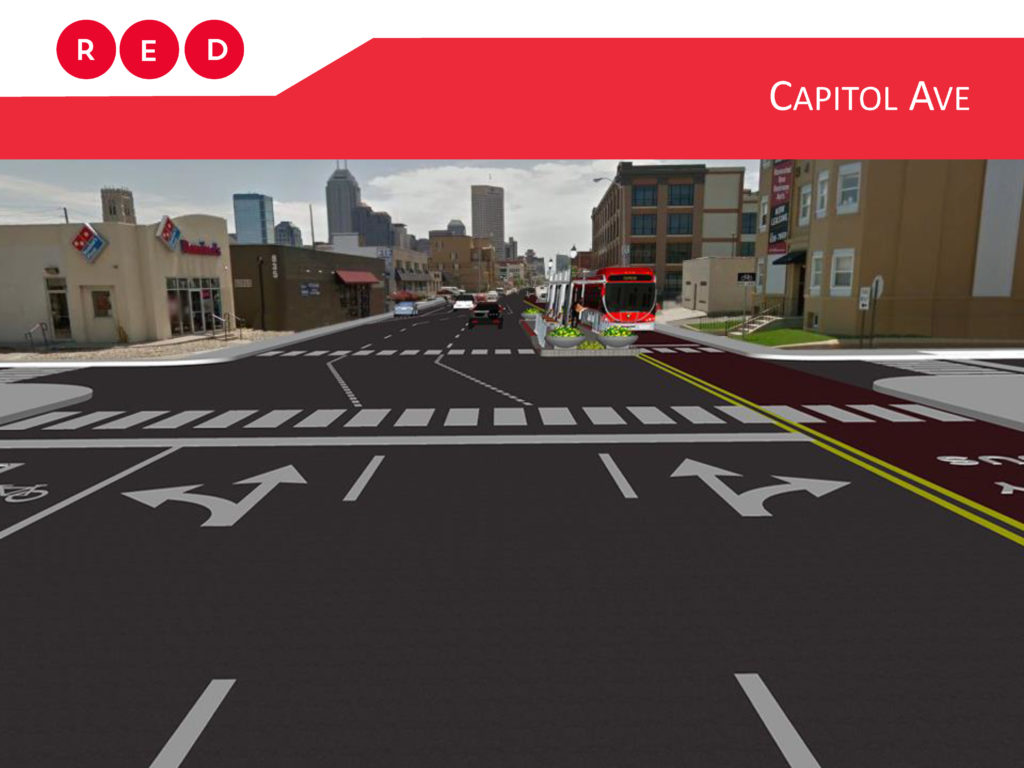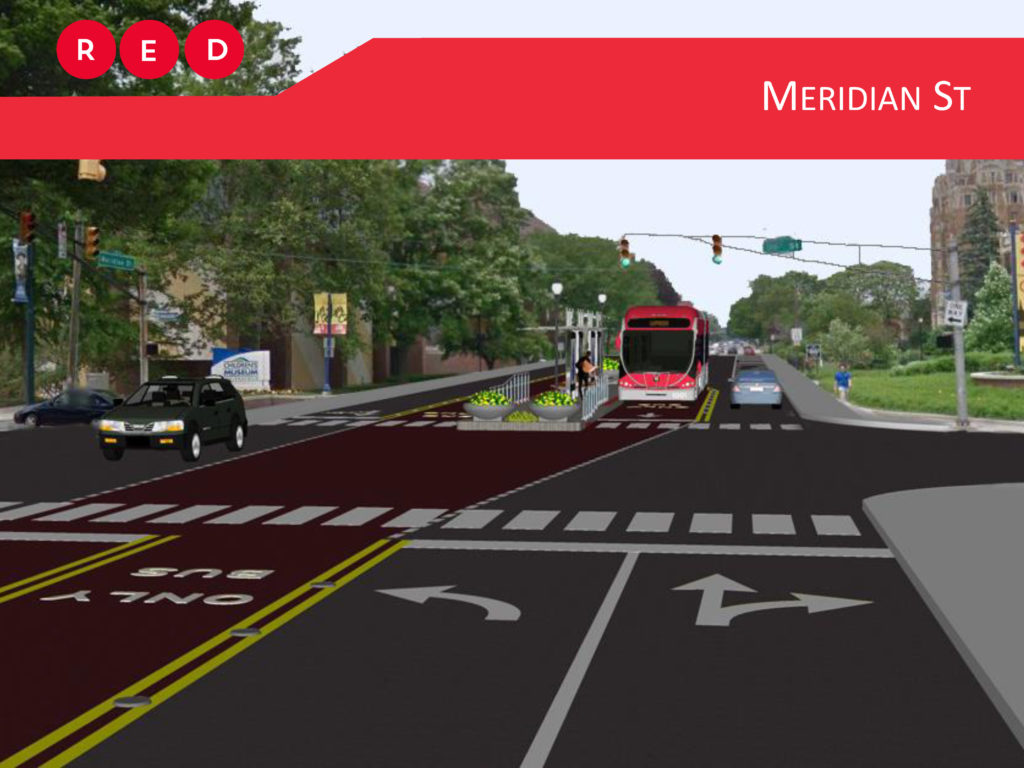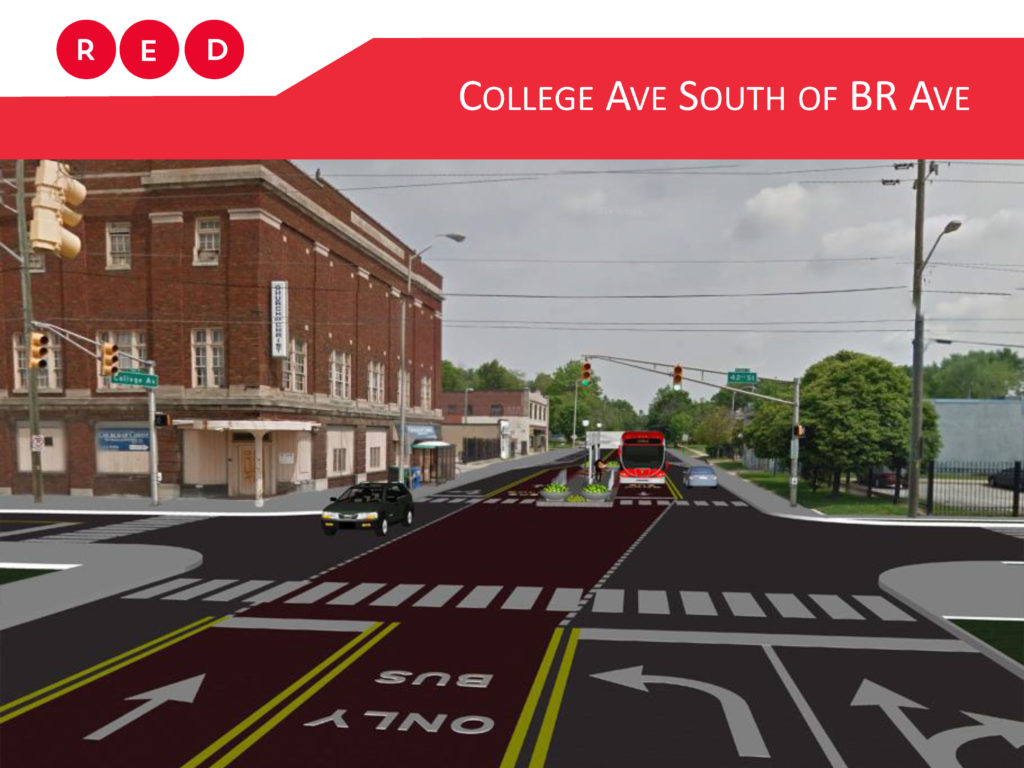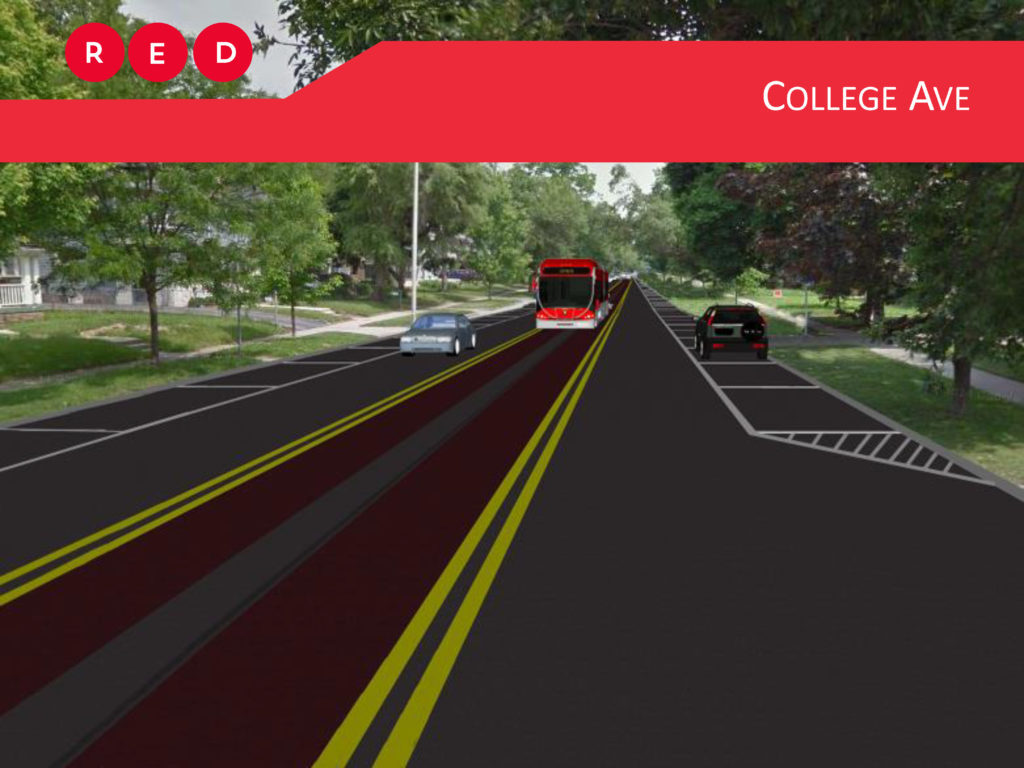On the heels of the recently constructed Julia M. Carson Transit Center, Indianapolis’s mass transit system will be getting another major upgrade thanks to the multi-phase IndyGo Red Line Bus Rapid Transit project that is scheduled to begin construction in 2017. The 35-mile Red Line will be the first rapid transit service in the state and the first all-electric Bus Rapid Transit (BRT) in the nation. The project will be completed in three phases and will essentially connect Greenwood to Carmel and Westfield, focusing on the Indianapolis Regional Center. The project hopes to increase mobility, livability, accessibility, and sustainability in central Indiana.
The Red Line BRT is an important move for Indy, and Shiel Sexton is excited to be part of the Construction Management team for this transformative and incredible amenity for the city. Not only will the Red Line BRT connect people to different parts of the city for work and entertainment; it will also provide residents with access to daily necessities. According to Transit Drives Indy, “Access to employment, education, and healthcare creates economic mobility – without transit options, Indy is stuck in neutral.” For Indianapolis residents, it’s time for that to change!
The first phase of the project has been fully funded, thanks in large part to a $75 million federal grant awarded in February of this year. The first phase will include 13.6 miles of rail stretching from the University of Indianapolis to the Indianapolis Art Center in Broad Ripple, with dedicated lanes for traveling on College Avenue, Meridian Street and Capitol Avenue, including a stop right outside Shiel Sexton’s own front doors.
The Red Line will allow riders to easily enter and exit at different points within the city and boasts shorter wait and travel times. The project aims to connect people with work, friends and family, and daily necessities with high frequency and high degree of dependability. Not only is this system by far the most economical mass transit option for Indianapolis, its permanence will make a profound socio-economic impact while improving quality of life in the Circle City.
The SCOOP | October 2016 | More from this Issue




